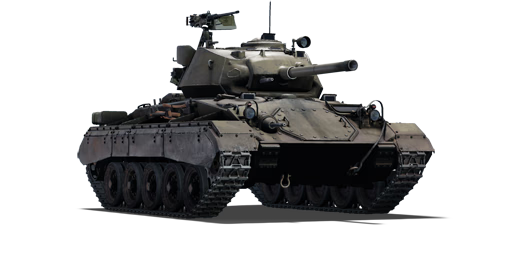When World War II started, the US Army had the Stuart as their primary light tank. However, the old armour arrangement and anemic 37 mm gun led the US Army to desire a more powerful light tank to replace the Stuart. Starting as the Light Tank T24, Ordnance Department sought to incorporate the Stuart mobility components into a design with better armour and the firepower of the 75 mm gun. This culminated in 1943 as the M24 and was nicknamed the "Chaffee". About 4,731 units were produced between 1944 and 1945 and the M24 saw its first combat service in the Battle of the Bulge. The M24 Chaffee would go on to serve throughout the rest of World War II, the Korean War, and in foreign armies elsewhere.
The M24 Chaffee, introduced alongside the American ground tech tree in Update 1.45 "Steel Generals", is a major improvement over the series of M3/M5 Stuart light tank that players experience beforehand. The Chaffee's mobility is on par with the M5 Stuart, being able to move forwards and backwards at swift speed. The improved sloped armour in the front can allow the Chaffee to better take a hit than its predecessors, not to mention the larger crew size. Most importantly, the 75 mm gun allows the light tank to maintain similar firepower to a medium tank. Players can make use of the superior mobility offered by the Chaffee platform and the firepower benefits of the 75 mm to not only strike enemies where they least expect it but also scout them out in order to make teammates aware of enemy positions.















